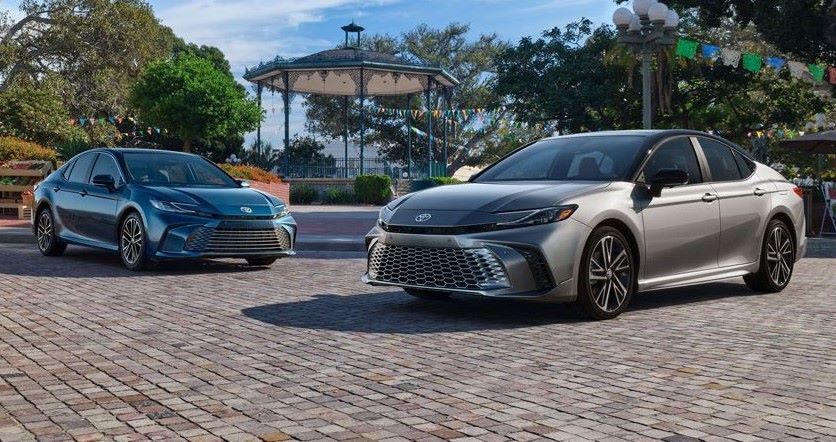Toyota’s 5th-Generation Hybrid Transaxle Boasts Global LineageToyota’s 5th-Generation Hybrid Transaxle Boasts Global Lineage
Regional expertise was assigned to lead global development of each component, and the team partnered with North American and Japanese suppliers to design and develop them.

NOVI, MI – We know that Toyota’s fifth-generation 2025 Camry is 100% hybrid in either FWD or AWD configuration with up to 232 net combined hp from the AWD model. And we know that this hugely popular car is sold all over the globe including in most of Europe and much of Asia as well as in North America and Japan.
So how does Toyota design, develop, source and build such a high-complexity, high-volume product to satisfy all of that global market and customer diversity? At a recent CTI Symposium presentation here, Brian Schneidewind, Toyota North America vice president for Powertrain Design, offers an inside look at the global process through which the hybrid system’s new transaxle was created.
“Our global approach touched on design, manufacturing and calibration,” he says, through collaboration among the company’s global R&D centers in Toyota City, Japan; Shanghai, China; Ann Arbor, MI, USA; and Brussels, Belgium, that began in 2017. “Each region developed a regional derivative while maintaining interchangeability.” Partly because these transaxles would be coupled with different-displacement engines (1.8L, 2.0L or 2.5L) depending on the market, the regional designs could vary from each other in some respects but must deliver the same performance.
Regional expertise was assigned to lead global development of each component, and the team partnered with North American and Japanese suppliers to design and develop them. For the output oil pump, they held a “clean-sheet” competition from 2019-2022 that resulted in two different designs delivering the same performance, each best suited to its manufacturing region. Schneidewind says this resulted in 40% lower cost vs. a single design because such partnering with regional suppliers’ expertise and manufacturing equipment avoided the high cost of “transplant manufacturing.”
At the same time, when a region had a particular technology lead, it was assigned global development responsibility. For example, the global development lead on the system’s driveplate damper was assigned to the European region because early testing showed it could meet the required performance criteria at the lowest cost. And for computer-aided engineering, he says, “We found it most efficient for the global leader to develop and share a common tool.”
To manufacture this derivative-design new Camry, they reduced assembly equipment costs by thinking globally from the earliest stages and developed the new approach of designing and building short individual pieces, shrink-wrapping them (vs. having to crate larger, tall parts) and shipping them by common carrier. Then, for North American manufacturing, they optimized volume allocation between Toyota’s West Virginia and North Carolina parts plants with three shifts of machining and two shifts of assembly operations to minimize North America’s high equipment and labor costs.
North America took the calibration lead for driveability by tuning it to feel “confident and natural” for that region’s customers, then confirmed it for global acceptability. The hybrid’s selectable “Sports Mode” calibration is based on North American customer usage from data analysis and surveys, which showed that drivers use Sports Mode temporarily and infrequently for “spirited” driving and two-lane highway passing. So, knowing that Sports Mode would not impact fuel economy, Toyota’s calibrators substantially differentiated it from Normal Mode with increased throttle response and acceleration (by both motor and engine) and stronger deceleration.
“Many small improvements in design, manufacturing and calibration add up to meeting our cost, mass, localization and performance targets on the 2025 Camry,” Schneidewind concludes, adding that this new car is 100% hybrid but with fun-to-drive performance, reduced powertrain noise and lower vehicle cost than the previous model; the 2025 LE stickers for $455 less than the 2024 LE Hybrid.
Among the brief media comments he quotes is WardsAuto’s “All good and all hybrid.” And he notes the global team worked on a 24-hour cycle. “We worked 12 hours, then handed off to Japan, which worked for 12 hours before handing back to us.”
We’d doubt that everyone was working regular 12-hour shifts, but it sure sounds like the team leaders were.
About the Author
You May Also Like